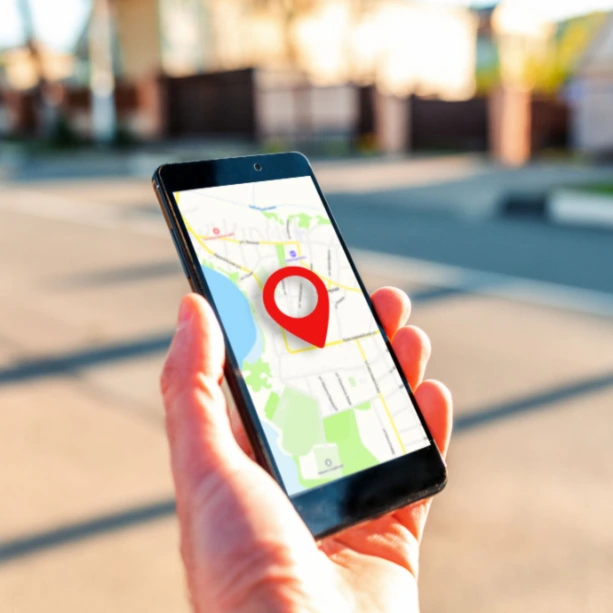When it comes to high-value assets, knowing the location of them in real-time is important across several industries. Such knowledge can help companies ensure proper asset maintenance, among other benefits. Geolocation is a powerful method for monitoring assets, and can be done through different ways. Here is a breakdown of geolocation and its different techniques used within Real Time Location Systems (RTLS)... ![Geolocation can help advance your business, but what methods does it use as part of RTLS?]](https://www.link-labs.com/hs-fs/hubfs/IoT.webp?width=850&height=566&name=IoT.webp)
What is Geolocation?
Geolocation is the use of devices or systems to determine the geographic position of an item. An example would be a family on summer vacation using a GPS to find a hotel. That GPS device provides the family's real-time location as they travel and the hotel's location and allows for an accurate ETA for the family.
Geolocation also provides benefits to businesses as well. Imagine a warehouse worker trying to locate a piece of machinery necessary to get the job done. Through geolocating, the worker can have real-time visibility into its location.
There are many different methods to determine location through geotargeting. Each type provides different pros and cons. The biggest factor to consider is which one is the best match for your business? Geolocation makes it possible to know the geographic position of your desired location or object.
Different Types of Geolocating Techniques
Can GPS be Used for Geolocating?
Global Positioning Systems (GPS) consist of several satellites that orbit the earth and provide geographical data anywhere in the world. GPS uses radio navigation to determine the location of the GPS device on the earth and is available worldwide. Some areas may not have as strong of a signal as one would want, but it has more availability than any other method.
This technique is very accurate and standard for traveling and transportation. GPS provides a high level of accuracy and ubiquity, but it does come at a cost. GPS does not have strong battery life and drains more power than any other method on this list. This drainage presents a problem for companies wanting excellent tracking with minimal maintenance. Companies who use GPS will have to constantly change batteries on their trackers, which is a considerable challenge when dealing with thousands of pieces of equipment, pallets, and containers. GPS has a lot to offer, but its fit with your company may not be correct.
Can Wi-Fi be Used for Geolocating?
Wi-Fi is also a standard geolocation method, but it has negative traits. Wi-Fi generates a location using a Wi-Fi signal it is nearest to. This connection is communicated to the database, using the Wi-Fi access point name and MAC address to find neighbor Wi-Fi networks. When using geolocation, a database then uses the information gathered from all nearby Wi-Fi networks to determine the item's location. This technique can be very accurate but has its limitations:
- Wi-Fi is not available everywhere; this method is useless without a signal.
- Wi-Fi does not possess the ubiquity of GPS nor the level of accuracy. Wi-Fi provides value where GPS signals are not strong, and Wi-Fi is available.
- Wi-Fi has better battery life than GPS, and its fit with your company ultimately depends on your overall needs.
Can Cellular Networks be Used for Geolocating?
Techniques using networks for geolocation are a viable option for some situations. The most recognized example is the phone use of cellular data to determine location. Cellular networks triangulate with other nearby cell towers to generate your phone's location. Cellular accuracy depends on the saturation of cell towers in the device's area.
This method is very effective in populated cities where cellular is readily available but may not be the best option in rural areas. Many people complain about having no signal on farms, mountains, and woods, which is a cellular problem. Where there are no cell towers, there are no location capabilities. Using the network method also drains the battery faster than Wi-Fi though not quite as fast as GPS. Using the network method for geolocation can be helpful, but it has limitations.
Can Bluetooth be Used for Geolocating?
Bluetooth, specifically Bluetooth Low Energy (BLE), is another geolocation technique with a lot to offer. Bluetooth uses RFID to determine the location of its devices. This is often associated with tracking equipment in a warehouse or hospital, where Bluetooth beacons can be placed around the building for complete accuracy. These beacons transmit signals to attached Bluetooth tags, and when the tags respond, that signal is then transmitted to a gateway which is then communicated to the owner so they can see their items in real-time.
This method is very effective within structures and facilities but depends on beacon saturation. Bluetooth LE batteries can last up to 5 years, depending on the customer's needs. Bluetooth has its benefits but may not be what your business needs.
Join the AirFinder Difference!
- Innovation. Organizations can be freed up to innovate and bring more impactful products and services to market.
- Profitability. Increased profitability provides new opportunities to innovate and improve valuation.
- Digital Transformation. Discover competitive advantages, new revenue opportunities, improved customer relationships, and increased efficiency.
What is the Best Geolocating Solution?
End-to-End Geolocating
The best solution is the one that covers all areas of need. A solution that solves all difficulties associated with the problem would be a complete end-to-end solution. A complete solution is to find a solution that can track all of your assets inside your warehouse or on the road without changing systems or devices. Imagine never having to worry about your shipment's location as it is distributed all over the warehouse because your newly found solution can track from the truck to the shelf. Again, the best solution to your company's needs is a complete end-to-end one.
Geolocating Combinations
One of the best ways asset tracking companies solve problems is through technology combination. Combining geolocation techniques gives the owners any possible applications. These combinations allow longer tracking radiuses, longer battery life, and more options. Choosing the best option for your company is becoming increasingly more valuable as the world changes, and having that freedom could save your company time and money. You can do what is best for your company with the combination of modern RTLS technology.
Does Link Labs Have a Geolocating Solution?
What can Link Labs offer your business? Link Labs is the only RTLS provider that offers a complete end-to-end solution for your business needs. Link Labs’ patented technology allows users to track and monitor materials seamlessly, without losing visibility.
Discover exactly what you need at an affordable price. Our patented technology is tailored to fit your business needs and provides longer battery life, seamless indoor to outdoor tracking, and environmental monitoring. Get started on your path to geolocation RTLS today!





